- Details
- Written by: admin
- Category: terms
- Hits: 2098
An approximate number of storeys below ground can be determined by the surveyor where the exact number of storeys above ground is not clear from survey or drawing. This does not include the ground floor. It includes storage and mechanical plant levels only if these cover over 50% of the plan area.
- Details
- Written by: admin
- Category: terms
- Hits: 728
The floor structure is constructed of metal. Note that this refers to the structure, and not any lightweight sheet flooring (such as plywood) that might be present.
- Details
- Written by: admin
- Category: terms
- Hits: 2242
Structural irregularity is a feature of a building's structural arrangement, such as one storey significantly higher than other storeys, an irregular building shape or a change of structural system or material, that produces a known vulnerability during an earthquake. The user can choose a maximum of two vertical and two plan irregularities for a building. However, if a building has two irregularities of the same type (plan/vertical), the user needs to prioritize them by identifying the primary irregularity first and the secondary irregularity next.
- Details
- Written by: admin
- Category: terms
- Hits: 2608
All types of masonry units used as cladding, infill, or exposed wall structure. Includes a variety of masonry units, including adobe bricks and blocks, burnt clay bricks and blocks, stone, ceramic tile. It is often difficult to identify type of masonry units once the walls have been covered by plaster. These walls can be in the form of veneers, cavity walls, infill walls, as well as all of these materials used as Wall structure (a part of the Lateral Load-Resisting System), and where they are not covered by another material.

Stone masonry at the ground floor level and brick masonry above, Berkeley, California (S. Brzev)
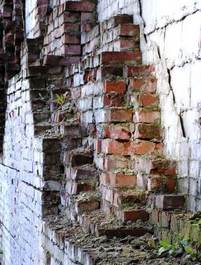
An older partially demolished multi-wythe brick masonry wall in Vancouver, Canada (B. McEwen)

An exterior masonry wall may be a part of the cavity wall system, which consists of two masonry walls separated by an air gap; usually, one wall is load-bearing while the other is veneer (cladding). These walls may be connected by metal ties, and horizontal reinforcement may be provided (A. Charleson)
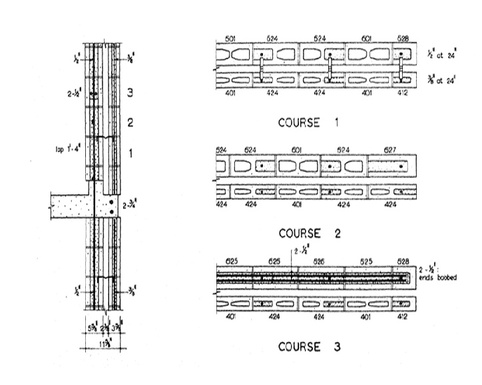
An illustration of cavity wall construction in New Zealand circa 1960 - note an interior (loadbearing) wythe and an exterior (veneer) wythe separated by a 50 mm air gap; the wythes are connected by galvanized wire ties (Holmes,I.L., Concrete Masonry Buildings in New Zealand, Proceedings of the 3rd World Conference on Earthquake Engineering, Session IV: 244-255,1965 - reproduced with the permission of the International Association for Earthquake Engineering)
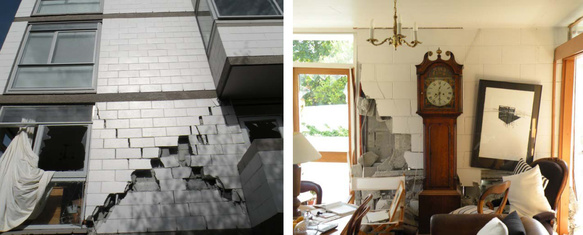
Concrete block cavity walls damaged in the 2011 Christchurch, New Zealand earthquake: the photos show damage of both exterior and interior wall wythes (J. Centeno)

Masonry veneers are common exterior walls in Canada and the USA; a masonry veneer is a single-wythe brick masonry wall securely fastened to a structural backing (e.g. concrete masonry block wall, steel or wood stud framing). A veneer can be attached to structural backing by means of metal ties (B. McEwen, Canada; hyperlinked drawings courtesy of Masonry Institute of BC)
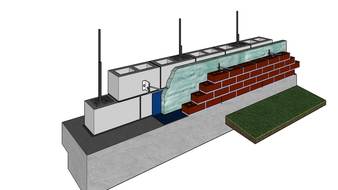
A diagram showing layered construction of a concrete block masonry backup wall with clay brick masonry veneer and insulation in between (web link permission courtesy of Masonry Institute of BC, Canada)
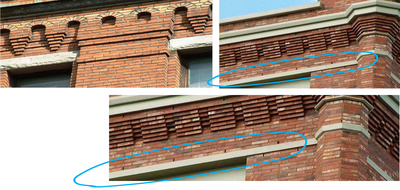
The exterior walls shown on the top photos look like loadbearing brick masonry construction. The photo on the left shows an older loadbearing brick masonry wall (built between 1900 and 1950), while the photo on the right shows a wall in a modern building (built between 1990 and 2010) which has similar masonry detailing like older buildings. However, the exterior brick masonry wall is a veneer and the loadbearing wall is likely a wood frame. The wall has weep holes characteristic of veneer construction (see detail on the bottom photo). The photos were taken in Vancouver, Canada (B. McEwen)
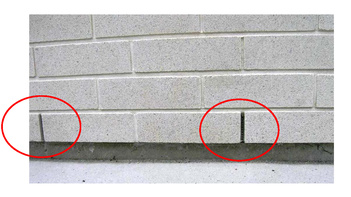
A concrete brick veneer wall with weep holes (B. McEwen)
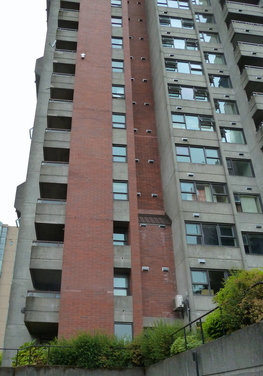
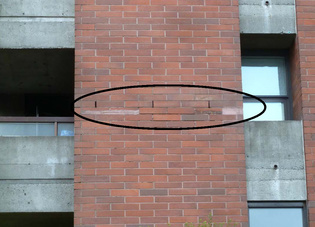
An example of a masonry veneer in a reinforced concrete building in Vancouver, Canada; veneer can be identified by weep holes, as shown in the photo (S. Brzev)
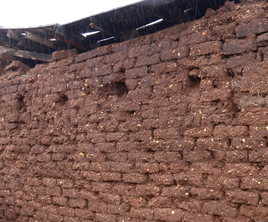
Adobe masonry walls: exposed (during construction), Chile (S.Brzev)
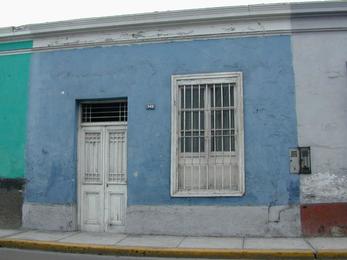
Adobe masonry walls overlaid by plaster, Peru (C. Loaiza and M. Blondet, World Housing Encyclopedia Report 52)

Stone masonry walls: dressed stone at the front facade and uncoursed stone masonry in the perpendicular direction, France (S. Brzev)
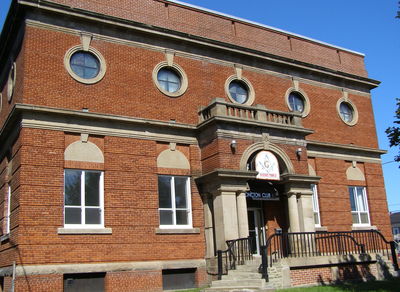
Exposed brick masonry walls, Canada (S. Brzev)
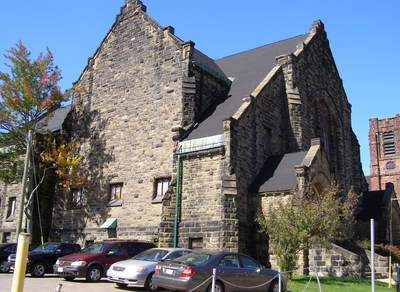
Exterior stone masonry walls, Canada (S. Brzev)

Many buildings in Lisbon, Portugal have glazed ceramic tiles bonded to exterior walls (S. Brzev)
- Details
- Written by: admin
- Category: terms
- Hits: 716
Year during which the construction was completed.


